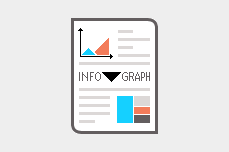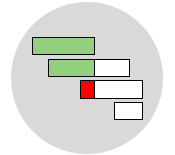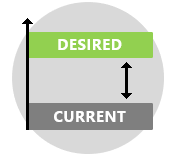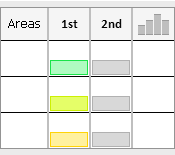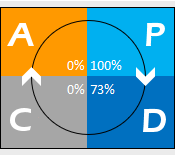
Variants include Maturity Models.
Our long-term continuous improvement effort can be complicated and a never-ending journey. In such situations, having a map can always be helpful to find the destinations and plan the best routes. A business roadmap is a map that displays business-related information rather than natural geographical details. Within the domain of business roadmaps, various types exist, including product, marketing, project, customer experience, change, and improvement roadmaps, which will be the focus of this article.
An improvement roadmap is a kind of business roadmap that is utilized to facilitate improvement and drive long-term transformational journeys. It helps to understand where we are now as well as where we want to go. That’s why it is important that the final destination is well-defined and realistically attainable. Improvement roadmaps are often used to summarize a company’s strategic planning in a comprehensive and integrated manner. Yet, they are useful in change management and organizational development projects.

There are many ways to construct improvement roadmaps, with some being long and complicated. However, it is essential that they are simple to create and easy to follow. They can be presented in various formats, such as timelines, milestones, tables, or matrices. Additionally, it is common for an improvement roadmap to be presented on a single sheet of paper that shows all the details. In its simplest form, an improvement roadmap consists of the following four sections.
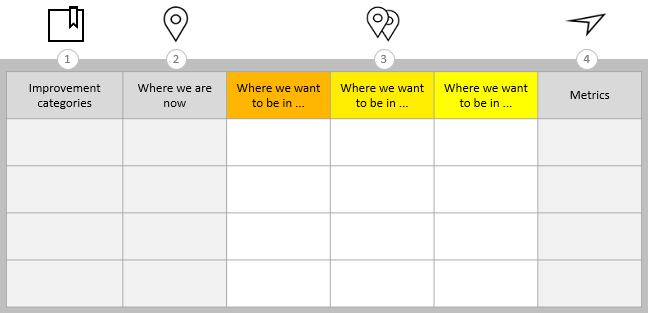
It is important to know that the final milestone within each improvement category represents the final destination or the big goal to be achieved. It represents the end of your journey and the achievement of the improvement goal. Furthermore, each milestone or intermediate target can be viewed as a separate project or sub-project for which you might create an action plan to ensure successful execution.
Once goals have been established and the improvement roadmap has been formulated, it is essential to develop an action plan for each improvement category or project. Action plans help breaking down big goals into smaller and workable activities. They outline all relevant activities, their respective durations, the sequence in which they will be completed, the individuals or teams responsible for their execution, and any additional information that may facilitate the achievement of improvement goals.

Constructing an Improvement Roadmap
The following are key steps involved in constructing an improvement roadmap:
- With your team, present the topic and define the purpose of the improvement roadmap.
- Establish the categories in which you want to set your improvement goals.
- For each improvement category, analyze the current situation and where you want to be in the next two or three years.
- Set improvement targets and milestones for each improvement category.
- Establish performance metrics for each improvement category.
- Initiate improvement projects and action plans to help you achieve your improvement goals.
- Implement the improvement projects and action plans and apply ongoing measurement.
- Change the routes as needed throughout your journey keeping the final destination in mind.
Example
The following is an illustrative example of an improvement roadmap designed to enhance workplace throughput and efficiency.
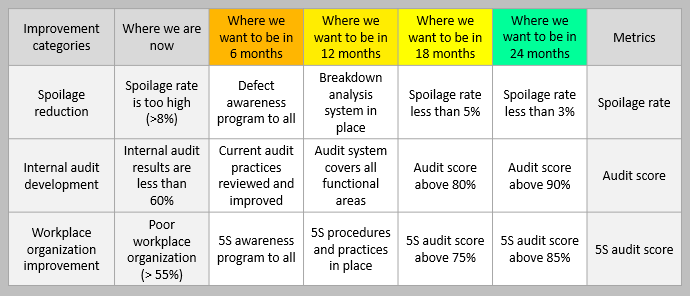
Another shorter time frame improvement roadmap has been specifically designed for the non-operational functions (human resources and customer service).
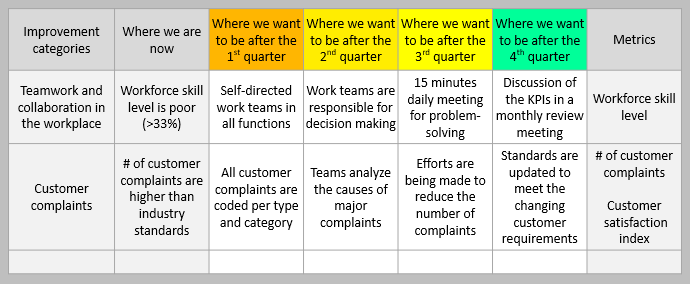
Example
The following is an example of an improvement roadmap that was created to improve the shipping and warehouse department at a manufacturing company.


There are many tools that can help in the creation of improvement roadmaps. One of the simplest and straightforward approaches is to use this improvement roadmap template.
Wrapping Up
Having a roadmap for long-term business improvement is valuable. Roadmaps help clarify where you are and where you want to go. These roadmaps are easy to create and can be presented in different formats including timelines and matrices. They typically have multiple milestones, with each final milestone as the optimal goal to be achieved. Action plans are important to break down big goals into smaller tasks and ensure successful execution.
Other Formats
Do you want to use the slides in your training courses?

Improvement Roadmap Training Material – $18.85
Related Articles
Related Templates






